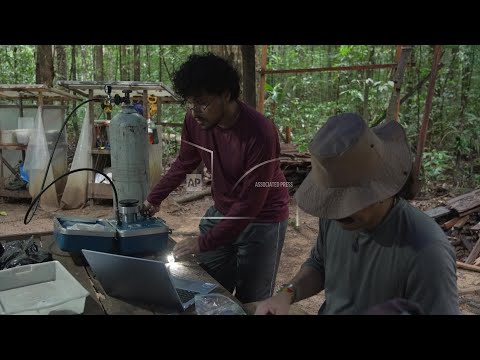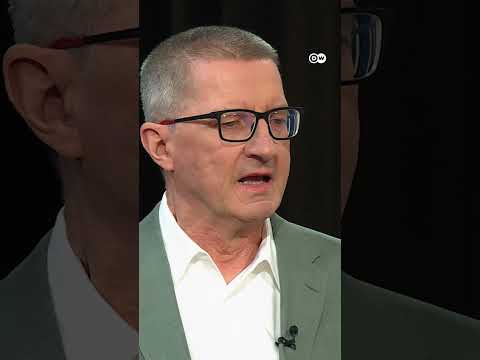(29 May 2025)
RESTRICTION SUMMARY:
ASSOCIATED PRESS
Caixuana National Forest, Brazil – 20 March 2025
1. Various of researchers studying plants leaves
2. SOUNDBITE (Portuguese) João de Athaydes, Vice Coordinator of Esecaflor: ++PARTIALLY COVERED++
“The Esecaflor Project started in 2000 with the goal of understanding how the Amazon rainforest behaves in drought events. Currently, it is the longest running project in the planet.”
3. Various of João de Athaydes walking through the forest
4. SOUNDBITE (Portuguese) João de Athaydes, Vice Coordinator of Esecaflor: ++COVERED++
“The project consists of two plots of one acre each. One plot is totally natural, with no human intervention. And the other plot we covered with plastic panels, keeping the vegetation without damaging it, with the goal of reducing the amount of water that reaches the forest.”
5. Wide of a researcher collecting data from sensors
6. Close of sensors on trees
7. Various of remains of transparent plastic panels that was used to divert rainfall in the study plot.
8. Various of a researcher collecting data on a computer
9. SOUNDBITE (Portuguese) João de Athaydes, Vice Coordinator of Esecaflor: ++COVERED++
“The drought has already happened, the forest has already adapted. Now we want to understand what happens next.”
10. Various of rain falling
11. Close of ants crawling over fallen leaves
12. SOUNDBITE (English) Rachel Selman, Researcher at the University of Edinburgh: ++COVERED++
“We know very little about how drought and climate change influences soil processes.”
ASSOCIATED PRESS
Caixuana National Forest, Brazil – 22 March 2025
13. Aerial shot of the Amazon rainforest
ASSOCIATED PRESS
Caixuana National Forest, Brazil – 20 March 2025
14. SOUNDBITE (English) Rachel Selman, Researcher at the University of Edinburgh: ++PARTIALLY COVERED++
“So we need to understand more about how future climate change scenarios like drought and more extreme drought events could influence how soils are able to recycle nutrients and store carbon.”
15. Various of researchers collecting data
ASSOCIATED PRESS
Caixuana National Forest, Brazil – 22 March 2025
16. Aerial shot of the Amazon rainforest and rivers in the Caxiuanã National Forest region
STORYLINE:
A short walk beneath the dense Amazon canopy, the forest abruptly opens up. Fallen logs are rotting, the trees grow sparser and the temperature rises in places sunlight hits the ground. This is what 24 years of severe drought looks like in the world’s largest rainforest.
But this patch of degraded forest, about the size of a soccer field, is a scientific experiment. Launched in 2000 by Brazilian and British scientists, Esecaflor — short for “Effects of Forest Drought” in Portuguese— set out to simulate a future in which the changing climate could deplete the Amazon of rainfall. It is the longest-running project of its kind in the world, and has become a source for dozens of academic articles in fields ranging from meteorology to ecology and physiology.
Understanding how drought can affect the Amazon, an area twice the size of India that crosses into several South American nations, has implications far beyond the region. The rainforest stores a massive amount of carbon dioxide, a greenhouse gas that is the main driver of climate change. According to one study, the Amazon stores the equivalent of two years of global carbon emissions, which mainly come from the burning of coal, oil and gasoline. When trees are cut, or wither and die from drought, they release into the atmosphere the carbon they were storing, which accelerates global warming.
Find out more about AP Archive: http://www.aparchive.com/HowWeWork
Twitter: https://twitter.com/AP_Archive
Facebook: https://www.facebook.com/APArchives
Instagram: https://www.instagram.com/APNews/
You can license this story through AP Archive: http://www.aparchive.com/metadata/youtube/0cce194513854c07bc866065ed0ad5ea
Author: AP Archive
Go to Source
News post in June 3, 2025, 12:06 pm.
Visit Our Sponsor’s:
News Post In – News





